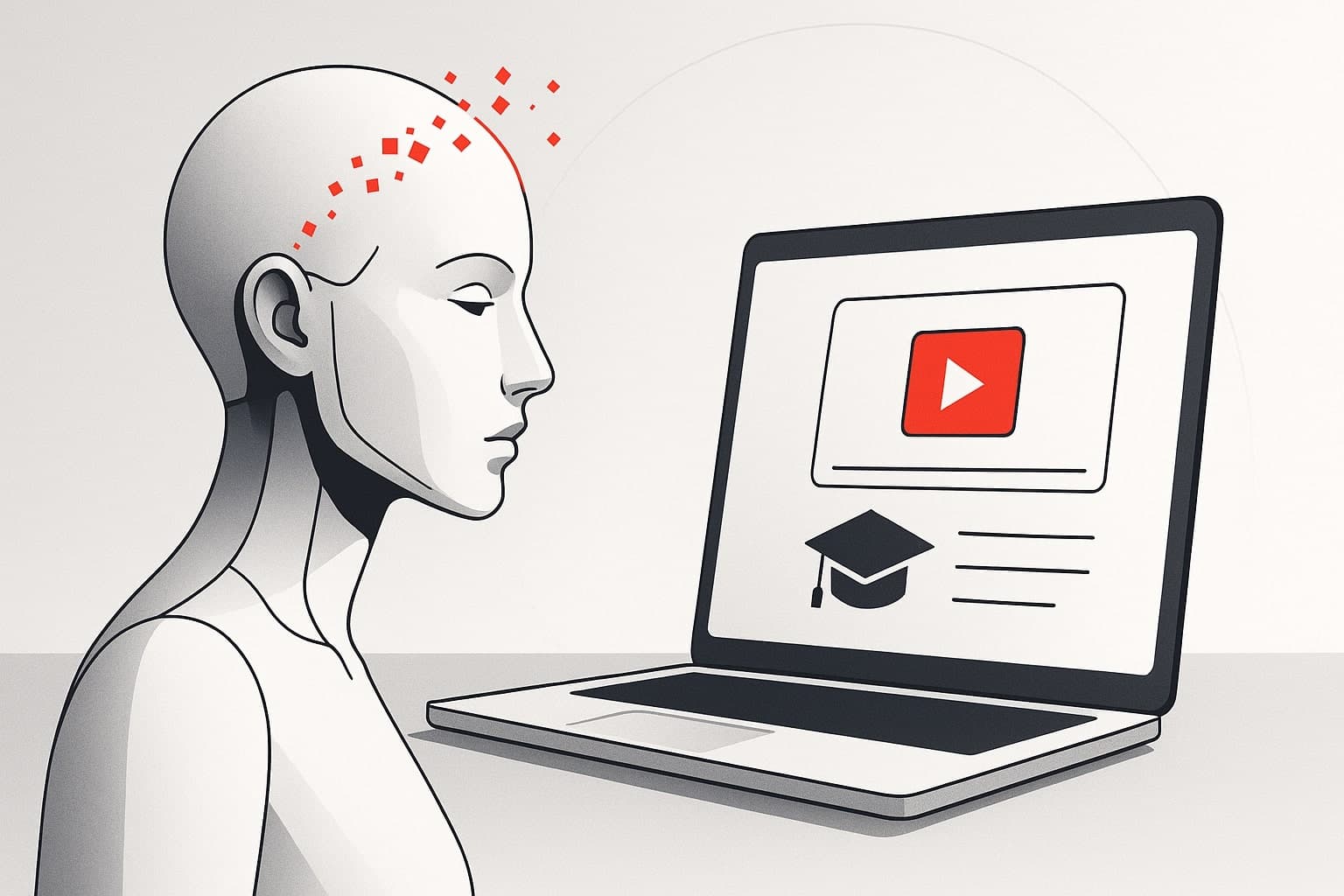October 20, 2025
Education

The year 2025 marks a turning point for education. Traditional e-learning platforms — once reliant on static video lectures and rigid content — are being replaced by AI-powered adaptive learning environments that think, respond, and evolve in real time.
At the heart of this transformation is Generative AI — technology that enables machines to create new, contextually rich content such as text, quizzes, lessons, or even simulations based on a learner’s needs.
Generative AI is not just making learning smarter — it’s making it personal, dynamic, and scalable across schools, universities, and corporate training programs.
Generative AI refers to systems capable of generating original content (text, visuals, code, audio) based on trained data and user prompts. In the context of education, it’s used to:
Create adaptive learning paths for each student.
Generate instant assessments and feedback loops.
Simulate real-world scenarios for skill-based learning.
Build AI tutors that interact naturally with learners.
Unlike traditional automation tools, Generative AI models (like GPT-5, Claude, Gemini, and custom LLMs) can understand context, intent, and learning goals, making education more intuitive than ever.
1. Hyper-Personalized Learning Journeys
One-size-fits-all education is officially outdated. Generative AI systems can now analyze a learner’s behavior, knowledge level, and pace to design individualized learning paths.
Example:
An AI-driven learning platform in 2025 can identify when a student struggles with data analytics concepts and automatically generate simplified explanations, examples, or mini-quizzes — all personalized in tone and complexity.
Impact:
Improves engagement and retention.
Reduces dropout rates in online courses.
Empowers learners to move at their own pace.
💡 AI tools like OpenAI’s fine-tuned GPT models exemplify how personalized tutoring at scale is now a reality.
2. Automated Course and Content Creation
For educators and enterprises, content creation is one of the biggest bottlenecks in digital learning. Generative AI solves this by producing high-quality course material, summaries, and interactive exercises in minutes.
Applications Include:
Generating slide decks, lesson notes, and quizzes automatically.
Translating and localizing content for global learners.
Creating scenario-based learning modules using conversational AI.
Mini Case Study:
A corporate L&D team used ChatGPT Enterprise integrated with Notion AI to build a “Leadership Development” course. The system generated 80% of the initial content — saving 120 hours of manual work.
3. Conversational AI Tutors and Learning Companions
Imagine having an AI tutor available 24/7 — one that understands your progress, learning style, and questions. Generative AI makes this possible.
These AI tutors use natural language understanding (NLU) and retrieval-augmented generation (RAG) to provide relevant, accurate responses drawn from trusted educational sources.
Real-World Example:
Duolingo’s GPT-powered language tutor launched in 2024 has evolved into an intelligent conversation coach in 2025 — adapting difficulty levels and offering real-time pronunciation correction.
Business Impact:
Reduces support load for educators.
Increases engagement and learning continuity.
Makes high-quality tutoring accessible globally.
4. Interactive Simulations and Scenario-Based Learning
Generative AI can now create immersive simulations where learners can practice real-world decision-making safely.
Examples Include:
Medical Training: AI-generated patient cases that evolve based on diagnostic choices.
Corporate Learning: Role-play scenarios where employees practice negotiations or conflict resolution.
STEM Education: Dynamic experiments that simulate physics or chemistry principles interactively.
Case Study:
A health-tech learning company built a generative simulation engine using LLMs and visual diffusion models. The platform generated unique patient cases for each trainee doctor — reducing training costs by 45%.
5. AI-Powered Assessments and Feedback
Traditional tests measure knowledge, but generative AI goes further — it evaluates understanding, reasoning, and creativity.
Capabilities:
Generate adaptive quizzes based on learner performance.
Provide AI-written feedback explaining mistakes.
Detect plagiarism and originality in AI-generated work.
Example:
Coursera’s AI feedback module uses generative models to grade open-ended answers and provide constructive feedback — helping learners understand why an answer is wrong, not just that it is.
Generative AI isn’t just revolutionizing learning outcomes — it’s reshaping business models for edtech companies, training organizations, and corporate academies.
Key Benefits:
Reduced Content Development Time: Up to 70% faster course creation.
Scalable Personalization: Tailored content for thousands of learners simultaneously.
Cost Efficiency: Less reliance on manual instructional design.
Data-Driven Insights: Analytics on learning progress and content effectiveness.
⚙️ In 2025, AI-native learning platforms will gain a competitive edge by offering self-evolving content ecosystems — learning platforms that learn from learners.
While the promise is vast, leaders must address several challenges before integrating AI into their learning ecosystems:
Data Privacy & Bias: Ensuring AI-generated content is accurate, ethical, and compliant with privacy laws (e.g., GDPR, FERPA).
Model Transparency: Avoiding “black box” models that make unexplainable recommendations.
Quality Assurance: Continuous validation of AI-generated educational material.
Integration Complexity: Aligning AI tools with existing LMS and learning workflows.
Solution:
Adopt a “Human-in-the-Loop” approach — where educators guide, review, and refine AI outputs — ensuring quality and trust.
By 2026, we’ll see the rise of autonomous learning ecosystems — platforms that design, deliver, and improve courses without human intervention.
Emerging Trends to Watch:
Generative Video & 3D Learning Assets: AI creating immersive AR/VR-based lessons.
Emotion-Aware Learning: AI detecting student frustration or confusion in real time.
Multi-Agent Learning Systems: Collaborative AI tutors that simulate peer-to-peer learning.
The line between teacher, learner, and machine will blur — making education an ever-evolving, personalized dialogue.
Generative AI has moved digital learning beyond static lessons — it’s creating living, adaptive ecosystems that respond to each learner’s needs.
For businesses and educators, this is the moment to redefine learning strategies, integrate AI into content pipelines, and unlock personalized education at scale.
If you’re ready to explore AI-powered digital learning solutions, the team at MLab Innovations can help you build intelligent, scalable systems designed for the future of education.
👉 Let’s shape the next generation of learning — together.